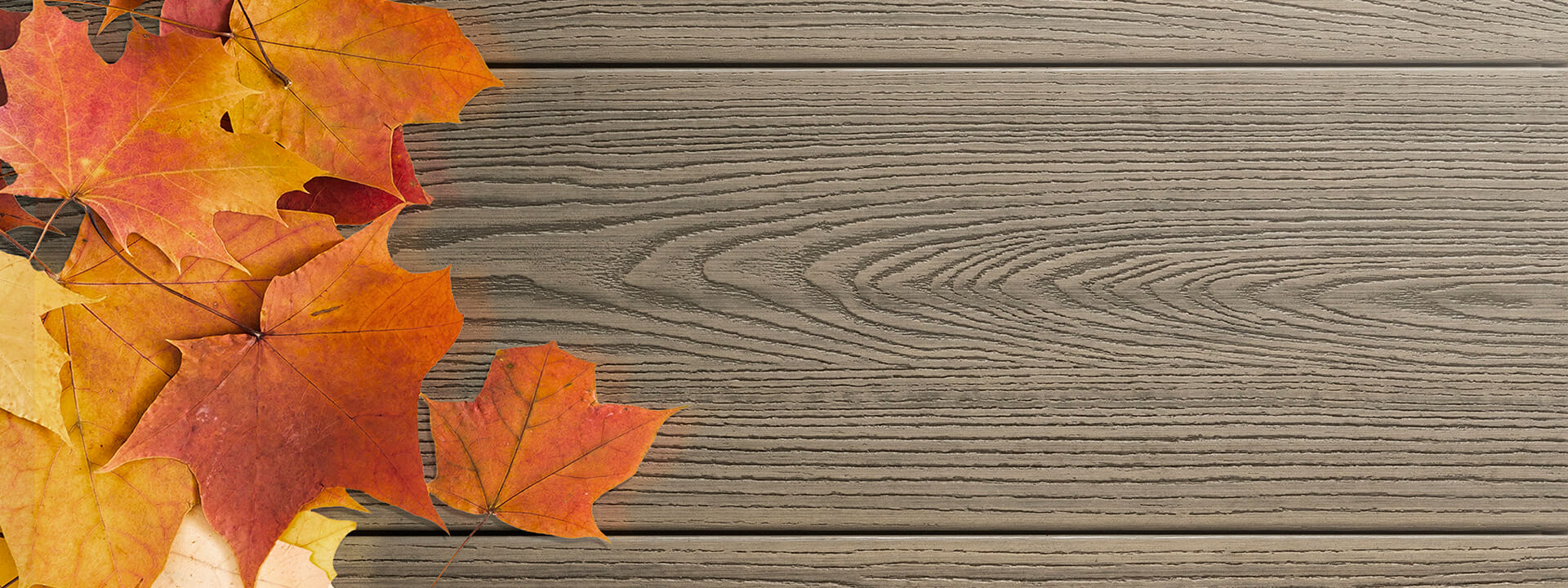How to Remove Decking Stains From Fallen Leaves
Our composite decking is robust and weather resistant. However, it’s not totally impervious to damage or staining. One of the most common ways for composite decking to become stained is when you allow fallen leaves to begin to rot on your deck.
Leaves don’t just stain composite decking, of course. Rotting leaves can leave stains on everything from patios, to furniture, to the walls of your sheds and garden structures should leaves be allowed to pile up and break down.

This staining is caused by chemical compounds in the leaves called tannins. They are astringent biomolecules that bind to proteins, leaving strong pigments behind. Tannins are found in things like tea and red wine and are responsible for the dry feeling both drinks leave in your mouth. When leaves become wet and start to break down they release tannins, which can result in unsightly stains. Like the way tea and red wine stain mugs, carpets and teeth!
How to avoid leaf stains
If you have a particularly tree-filled garden then it’s probably wise to consider opting for darker decking in the first place. Capped decking also offers greeted protection from stains. Regardless of the colour of your decking, it would also be wise to control the foliage in your garden by regularly trimming and cutting back overhanging trees and branches.
If overhanging trees actually belong to your neighbour, did you know you’re within your rights to trim anything hanging over on your property? And chuck the trimmings over their side of the fence? Just because it’s within your rights doesn’t mean it’s advisable for neighbourly relations… So we’d recommend chatting with them first.
Fallen leaves are just a fact of autumn and winter, and no matter how diligent you are about trimming back trees, they will fall on your deck. Make sure you sweep your deck through autumn and winter once a week. If you have lots of leaves, it’s probably worth investing in a leaf blower to help make this job a bit less labour-intensive and a lot more fun.

If you’ve been a bit lax with the sweeping, though, panic not. One of the benefits of investing in composite decking is that it’s really very forgiving with minimal maintenance.
Here’s how you can remove tannin stains on your decking
When autumn leaves its mark on your composite decking boards, first try cleaning it off with a mild detergent and warm water. You shouldn’t need to do much more than scrub lightly with a soft-bristled brush.
As a next step or an alternative, you can try pressure washing. But be cautious. Ensure it’s set to under 3000psi of pressure and hold it no closer than 30cm away from your decking to avoid damaging the protective coating with excessive force.
If all else fails, you can consider a very diluted bleach solution. And if *everything* fails, the other benefit of composite decking is that you can fairly easily replace individual boards with your leftover decking boards.

For regular tips and information from Composite Prime and a chance to win £100 John Lewis vouchers, subscribe by following this link.
